Discover 11 hidden attractions, cool sights, and unusual things to do in Auburn (United States). Don't miss out on these must-see attractions: Jordan-Hare Stadium, Samford Park, and Auburn University Chapel. Also, be sure to include Jule Collins Smith Museum of Fine Art in your itinerary.
Below, you can find the list of the most amazing places you should visit in Auburn (Alabama).
Table of Contents
Jordan-Hare Stadium
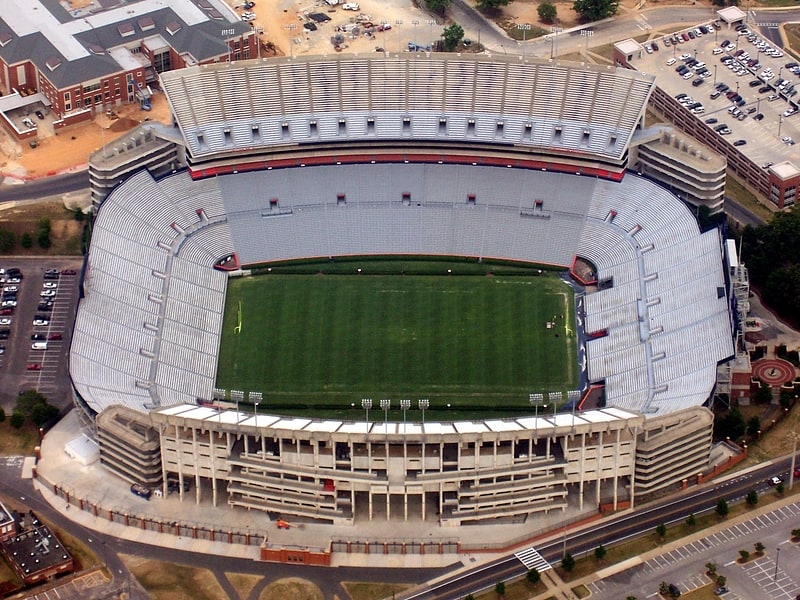
Stadium in Auburn, Alabama. Jordan–Hare Stadium is the playing venue for the Auburn University Tigers football team located on campus in Auburn, Alabama. The stadium is named for Ralph "Shug" Jordan, who owns the most wins in school history, and Cliff Hare, a member of Auburn's first football team as well as Dean of the Auburn University School of Chemistry and President of the Southern Conference. On November 19, 2005, the playing field at the stadium was named in honor of former Auburn coach and athletic director Pat Dye. The venue is now known as Pat Dye Field at Jordan–Hare Stadium. The stadium reached its current seating capacity of 87,451 with the 2004 expansion and is the 10th largest stadium in the NCAA. For years, it has been a fixture on lists of best gameday atmospheres and most intimidating places to play.[1]
Address: Auburn, 251 South Donahue Drive
Samford Park
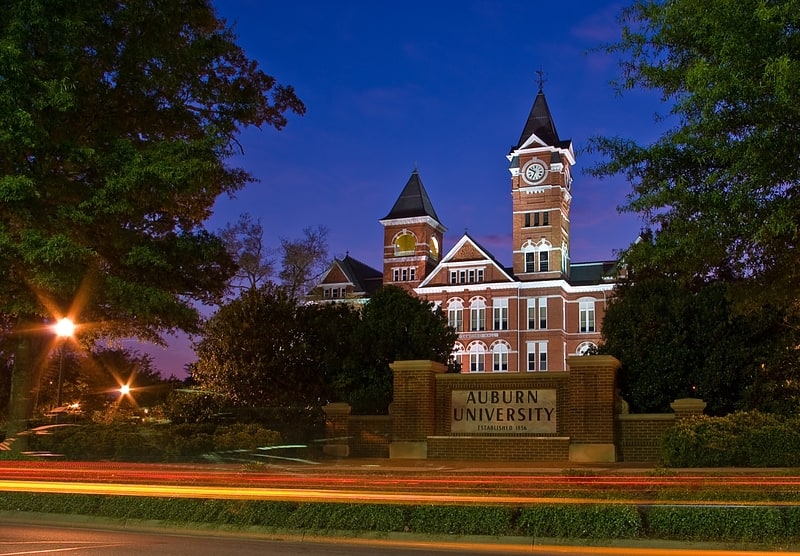
Building in Auburn, Alabama. William J. Samford Hall is a structure on the campus of Auburn University in Auburn, Alabama. It is an icon of Auburn University and houses the school's administration. The building is named for William J. Samford, the Governor of Alabama from 1900 to 1901.[2]
Address: 101 S College St, Auburn
Auburn University Chapel
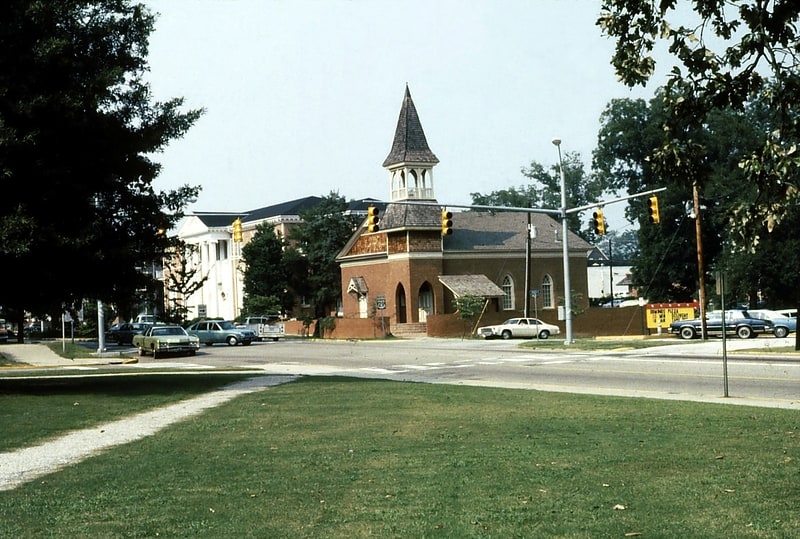
Building in Auburn, Alabama. The Auburn University Chapel is the second-oldest building and oldest building in its original location on the campus of Auburn University in Auburn, Alabama.[3]
Address: 139 Auburn University, 36849 Auburn University
Jule Collins Smith Museum of Fine Art
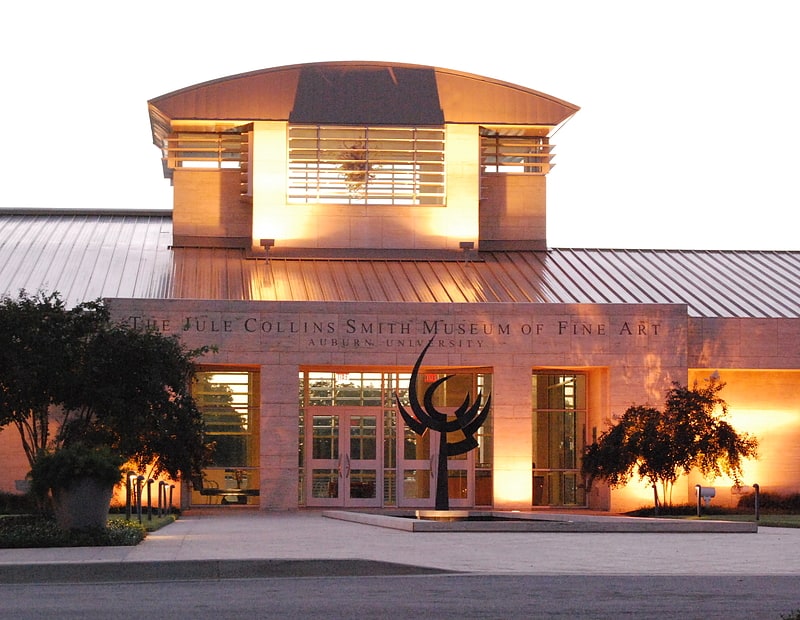
Museum in Auburn, Alabama. The Jule Collins Smith Museum of Fine Art is an art museum on the campus of Auburn University, and is the only accredited university art museum in Alabama. Opened on October 3, 2003, the Jule Collins Smith Museum of Fine Art contains six exhibition galleries within its 40,000 square feet of interior space. In addition to the galleries, the museum facility includes an auditorium, cafe, and museum shop. Outside the main building, the grounds encompass 7 acres of land, featuring an English-inspired formal area and woodland landscape, outdoor sculpture, and landscaped walking paths around the lake.
In spring of 2013, the American Alliance of Museums recognized the museum as an accredited museum. Accreditation is the highest industry standard for educational exhibitions and programming, operations, and collections stewardship. Approximately six-percent of the nation's museums are accredited.
The museum is named after Jule Collins Smith, the wife of Albert Smith, who graduated from Auburn University in 1947. Smith donated $3 million to the project as a gift to his wife, in honor of their 50th wedding anniversary.[4]
Address: 901 S College St, 36830-5812 Auburn
Auburn University Historic District

The Auburn University Historic District comprises the historic core of Auburn University in Alabama. The 14.5-acre district includes buildings built between 1846 and 1951, with a consistent red brick material palette.
Buildings in the district include Samford Hall (1888), The Lathe (1860s), Langdon Hall (1846), the Music Building (1887-1888), Broun Engineering Hall (1906-1910), Mary E. Martin Hall (1908), the Music Annex or Power Plant (1905), the early 20th-century Langdon Shops, and Biggin Hall (1951).
The Auburn University Historic District was listed on the National Register of Historic Places on June 3, 1976.[5]
Davis Arboretum
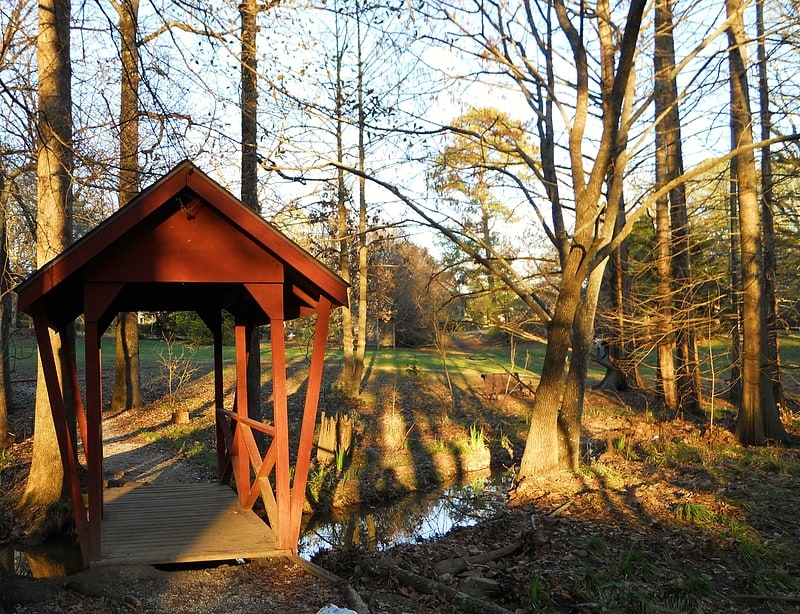
Arboretum in Auburn, Alabama. The Donald E. Davis Arboretum, in Auburn, Alabama, United States, is a public native plants museum, and botanical arboretum with educational facilities, event spaces, and a conservation program. Its grounds, covering 13.5 acres of Auburn University's campus, include cataloged living collections of associated tree and plant communities representative of Alabama's ecosystems, among which is mixed oak forest, carnivorous bog, and longleaf pine savanna. The living collections include more than 1,000 plant types, including 500 different plant species, with over 3,000 cataloged specimens. The Arboretum contains over a mile of interwoven walking trails that meander through various southeastern biotopes.
The arboretum's Rhododendron and Azalea Collection is one of the more extensive native azalea collections in the nation and the nationally accredited Oaks Collection contains over 40 regional Quercus species. The arboretum partners in a number of conservation projects through the Alabama Plant Conservation Alliance (APCA) hosted by Auburn University and largely coordinated by the arboretum.[6]
Address: 181 Garden Dr, 36849-5407 Auburn
Cater Hall

Building in Auburn, Alabama. Katharine Cooper Cater Hall, also known as the Old President's Mansion or the Social Center, is a structure on the National Register of Historic Places on the campus of Auburn University, in Auburn, Alabama. Designed by Joseph Hudnut and built for $17,000, Cater Hall was constructed in 1915 as the residence for the president of Auburn University. In 1938, a new president's home was built, and the structure became the social center for the new Quad dorms when they were built to the south of the mansion in 1940. In the late 1970s, the building was renovated to contain administrative offices and today houses Auburn University's educational support services divisions.[7]
Address: 277 W Thach Ave, Auburn
Chewacla State Park

County park in Auburn, Alabama. Chewacla State Park is a publicly owned recreation area in Auburn, Lee County, Alabama, occupying 696 acres to the south of Interstate 85. The state park's central feature, 26-acre Lake Chewacla, provides opportunities for fishing, swimming, and non-motorized boating.[8]
Address: 124 Shell Toomer Pkwy, 36830 Auburn
Auburn City Hall
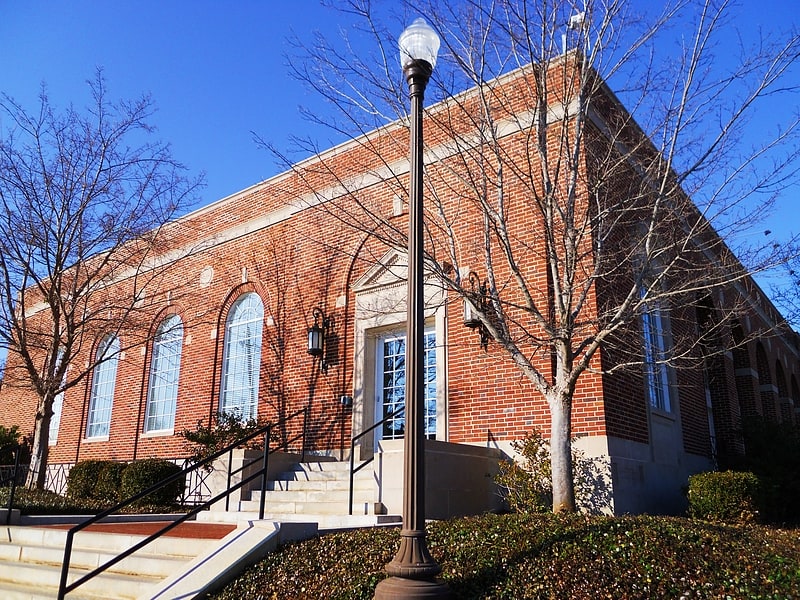
Building. Auburn City Hall in Auburn, Alabama, built in 1933, is the city hall of Auburn, Alabama. It was originally constructed as a post office in 1933, and, like many post offices constructed during the Great Depression, the building has a "starved classical" design typical of federal architecture, with symmetrical style and pointed pediments and elements of colonial revival architecture. It was listed on the National Register of Historic Places as the U.S. Post Office in 1983.[9]
Langdon Hall
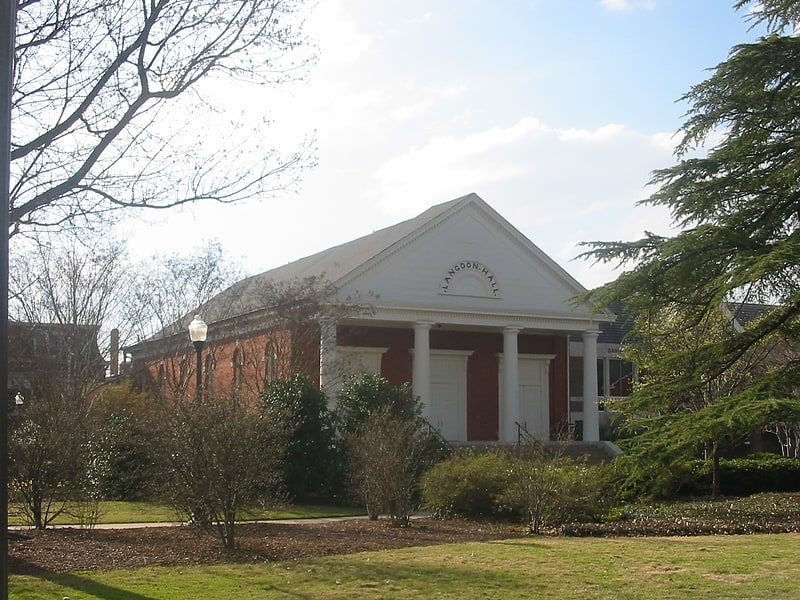
Building in Auburn, Alabama. Langdon Hall is a building on the campus of Auburn University in Auburn, Alabama, United States. Built in the Greek Revival style in 1846 as the chapel for the Auburn Female College and moved to the Auburn University campus in 1883, Langdon Hall is the oldest building in the city of Auburn, and today houses an auditorium and office space for Auburn University staff. Before the Civil War, Langdon Hall served as the location for a series of debates on the question of Southern secession, involving William Lowndes Yancey, Alexander Stephens, Benjamin Harvey Hill, and Robert Toombs. Langdon Hall is named for Charles Carter Langdon, a former mayor of Mobile, Alabama, Alabama Secretary of State, and a trustee of Auburn University from 1872–1889.[10]
Ebenezer Baptist Church
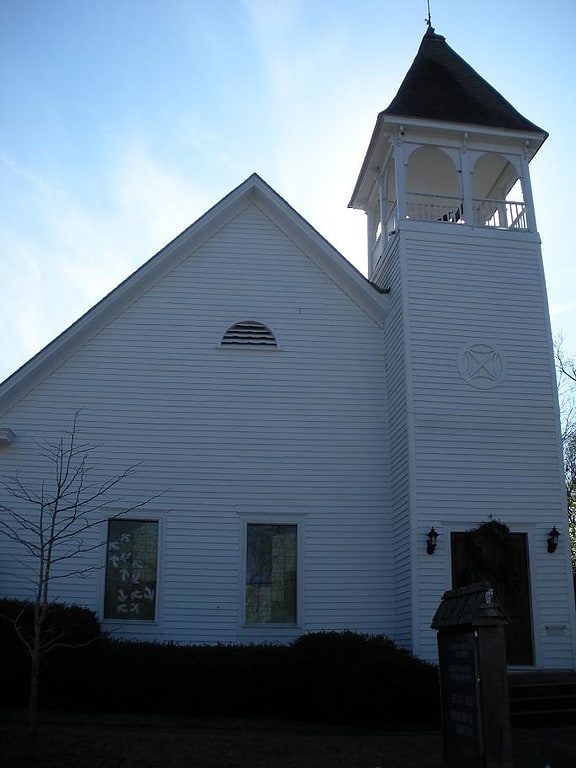
Church in Auburn, Alabama. Ebenezer Baptist Church is a Baptist church located in Atlanta, Georgia, United States, affiliated with the Progressive National Baptist Convention and American Baptist Churches USA. It was the church where Dr. Martin Luther King, Jr. was co-pastor from 1960 until his assassination in 1968, the location of the funerals of both Dr. King and congressman John Lewis, and the church for which United States Senator Raphael Warnock has been pastor since 2005. It is located in the historic area now designated as the Martin Luther King Jr. National Historical Park.[11]
Address: 450 E Thach Ave, 36830-5540 Auburn